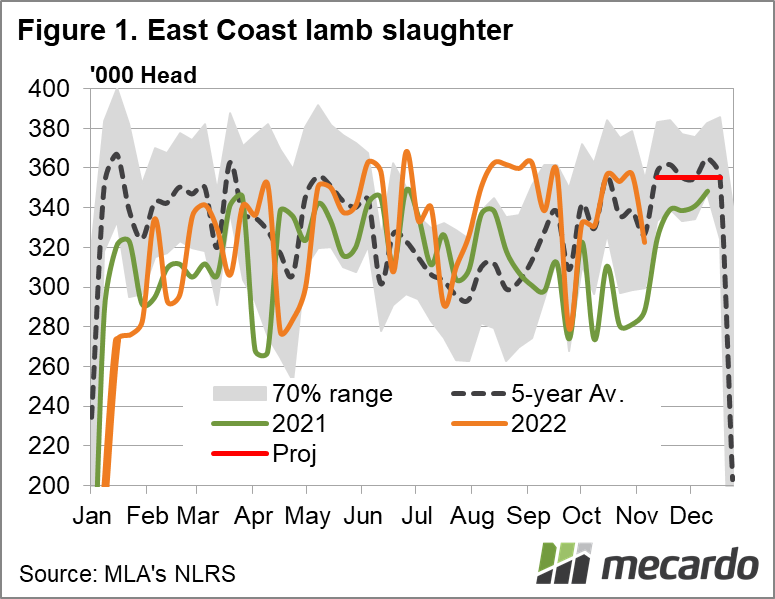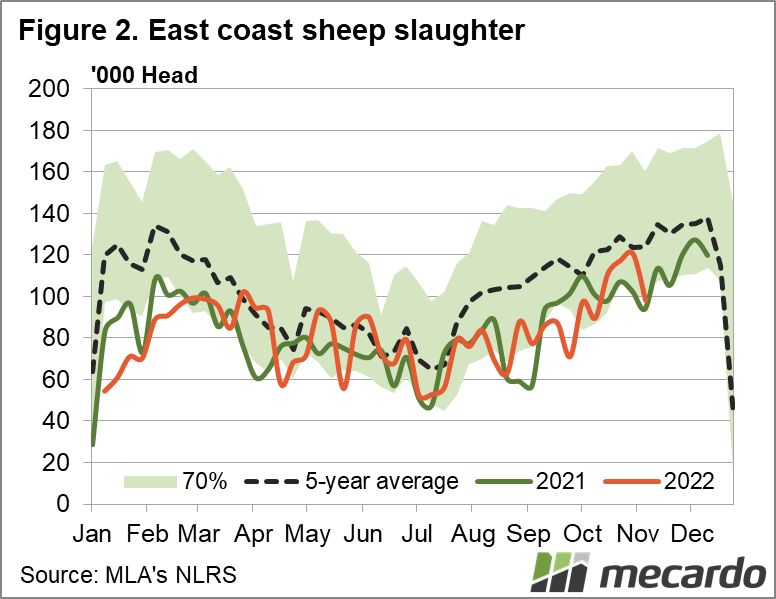Despite the floods and wet weather, lamb and sheep slaughter has managed to track along at a level not seen since before Covid arrived. The question remains whether current slaughter rates can cope with the expected increase in lambs this year.
The raw numbers look good for lamb slaughter. Since the start of July Meat and Livestock Australia’s (MLA) week slaughter numbers has nearly 6.8 million lambs exiting the system. Figure 1 shows this is much stronger going than last year, with 10% more lambs slaughtered.
We haven’t seen this many lambs slaughtered from July to November since 2017, but much of the increased rate was due to the unusually strong August slaughter levels.
However, compared to last year spring slaughter has been even stronger, with the last 10 weeks running 15% ahead of 2021. Spring slaughter numbers this year have been similar to those of 2020 and 2021, and similar to the five-year average.
The latest MLA Sheep and Lamb Projections were released in June, and back then they were forecasting a 6% increase in lamb slaughter this year. The slow start to the year means that as of last week east coast processors had killed 4% more lambs than in 2021.
This leaves 1.72 million head of lambs to be slaughtered in the next five weeks, at a rate of 344,185 head per week. Importantly, the required slaughter rate is well below the peaks seen during October. It’s a close call though. If slaughter returns to 355,000 head (red line on fig 1) for the coming five weeks, the increase on last year will only be 4.3%.
Sheep could pose a problem. If the supply of sheep increases significantly, and prices fall to a point where they are better margins for processors, they might displace lambs on the chains, or at least take up any extra space. Figure 2 shows that sheep slaughter has been very similar to last year. MLA forecast a 20% increase on 2021, so the expected sheep obviously haven’t come to market.
What does it mean?
Slaugther has been going well, but anecdotal evidence suggests there are a lot of lambs in NSW which will hit the market later than usual. If there are a lot more lambs out there than last year, and sheep start coming to market, there could be strong downward pressure on prices if slaughter capacity can’t be increased.
Have any questions or comments?
Key Points
- Lamb slaughter has been stronger than 2021 since July and during spring.
- If lamb slaughter is up 4% on last year, as predicted, slaughter capacity should cope.
- The concern is more sheep coming to market, or there are a lot more lambs out there.
Click on figure to expand
Click on figure to expand
Data sources: MLA, Mecardo



